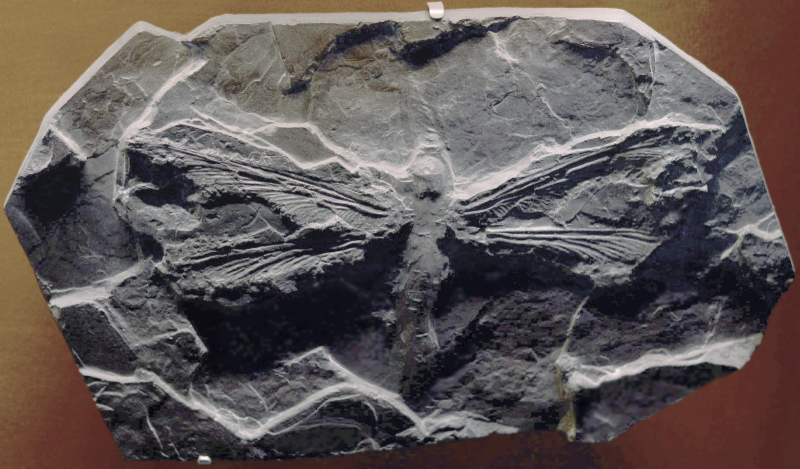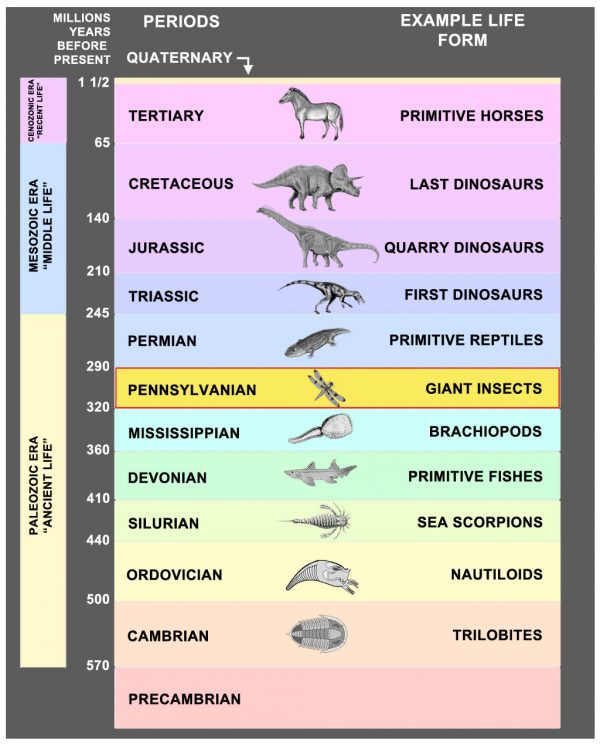As kids we loved dinosaurs. Recently Earth and Sky online magazine published this interesting article about why prehistoric insects were much larger than they are today. It's interesting and worth reading. We edited it to make it shorter.
Why were prehistoric insects so huge?
Before the dinosaurs, giant insects ruled the world more than 300 million years ago.
Consider Meganeura,
a genus of extinct insects from approximately 300 million years ago,
related to modern-day dragonflies. One member of this group – M. permiana
– was first described by researchers in Kansas in 1937 as having a
wingspan of over 2 feet (0.6 meters). It’s still considered one of the
largest known insects that ever lived.
While over a million insect species live today, truly giant insects no longer exist. Why did they disappear?
There are two main reasons. The most
important is that our atmosphere has changed. Millions of years go, the
air surrounding our planet was warmer, moister and contained more
oxygen. During the Carboniferous and Permian periods, Earth’s air contained 31-35% oxygen, as compared to just 21% oxygen in the air today.
Oxygen levels are especially important for
insects because they don’t have lungs. Instead, they rely on air flowing
through a series of opening across their bodies called spiracles, which connect directly to the tissues that need oxygen.
 |
| Fossil remains of M. Monyi, a member of the extinct insect genus Meganeura. Their wingspans could reach 2 feet |
RISE OF BIRDS
There’s another reason giant insects
disappeared. As ancient dinosaurs evolved and some developed the ability to fly,
eventually becoming modern birds, they put a cap on insect size through
predation and competition.
The earliest known bird – Archaeopteryx – appeared about 150 million years ago. Birds proved to be faster and more agile than the giant insects. In an article in LiveScience in 2012, paleobiologist Matthew Clapham of the UC Santa Cruz commented:
The change in insect size is gradual. This gradual change fits quite nicely with the gradual evolution in birds at the time.

